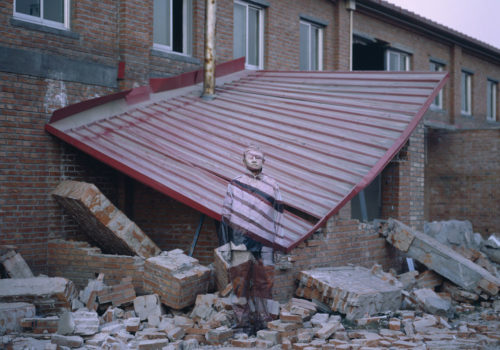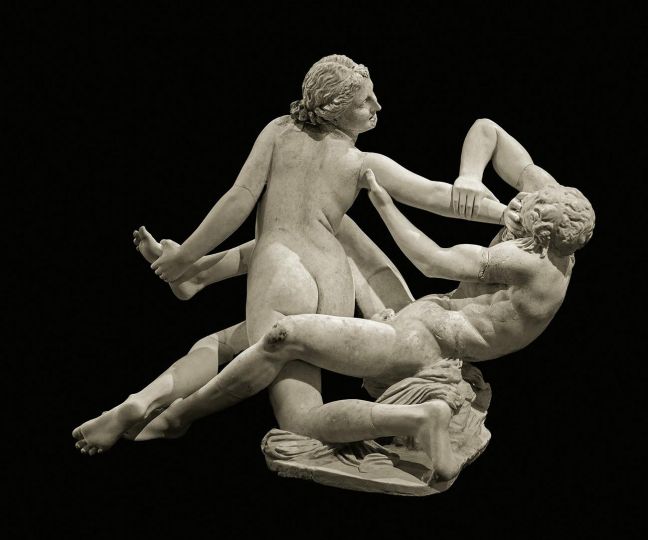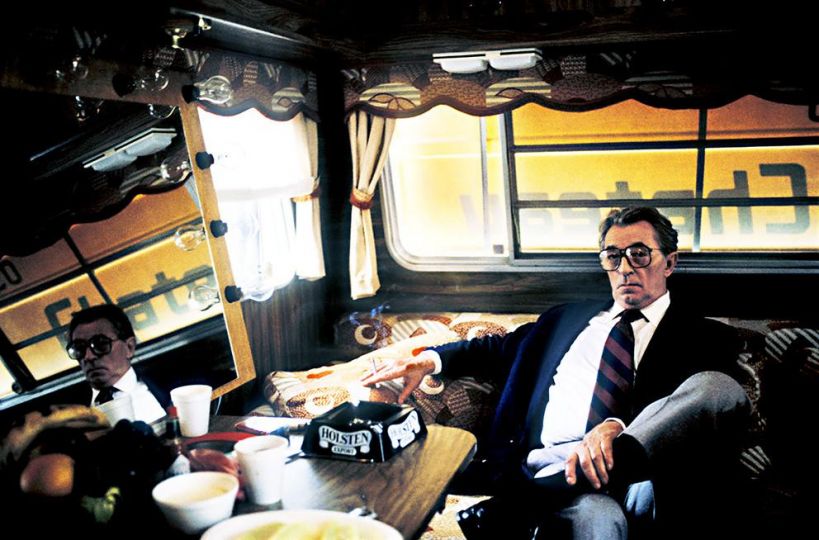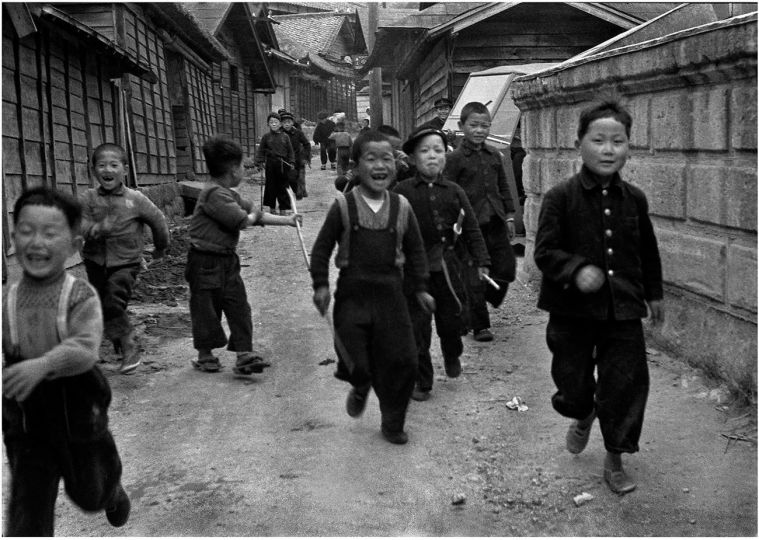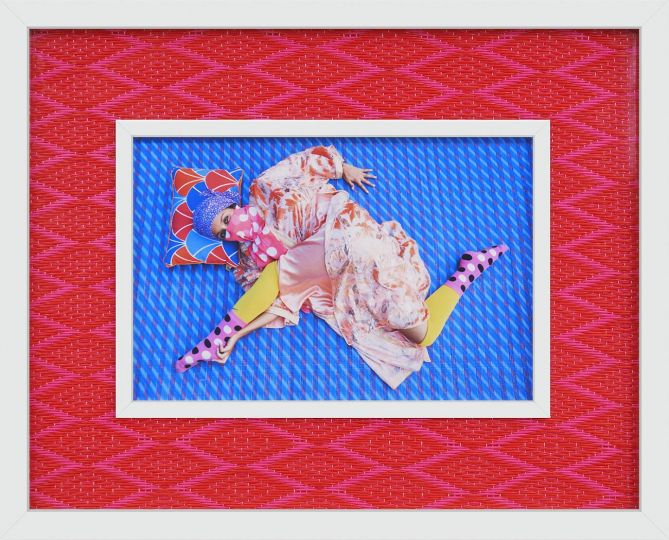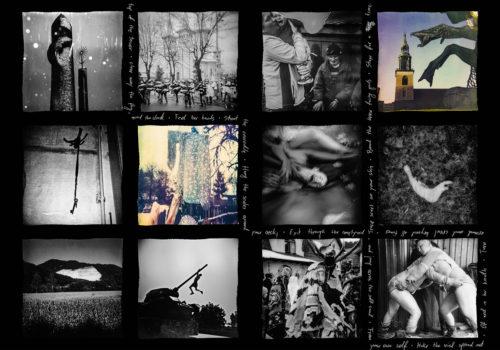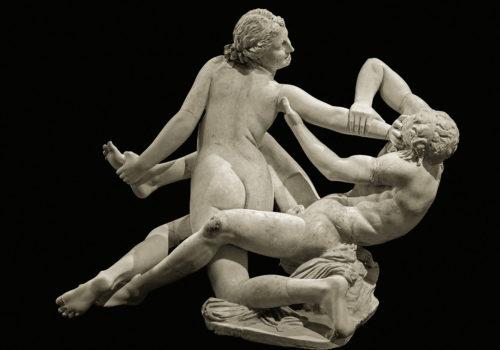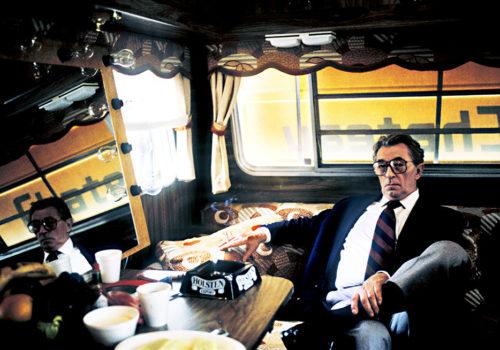The Ektaterina Cultural Foundation is presenting three exhibitions from March 13 through May 13, 2012. The first, “Hide in the City“, is made of self portraits by Chinese artist LIU Bolin. French photographer Bernard Plossu, provides his vision of the American southwest with black and white prints “From California to New Mexico, the American Southwest. 1966-1985“; and “The House”, by the Austrian collective G.R.A.M. founded in 1987.
• 13.03–13.05 : Liu Bolin “Hide in the City” presented by Galerie Paris-Beijing (Curator: Romain Degoul)
Are human beings animals?
All chameleon species are able to change their skin color. Rattlesnake can bury most of the body in sand soil. Thus they can not only protect themselves but also have better access to food. There are many other animals, such as geckos, beetles and so on, which have also learnt to so deal with the environment and their enemies in the long fight of life and death. In order to survive, hiding is often key.
Human beings are not animals. Because they do not know how to protect themselves.
The last three thousand years of human civilization seem to illustrate that human beings develop in the destruction of their environment and in the exploitation of others. The cost of this brilliant human civilization is that humans forget they are still animals, they forget their own instincts.
Human beings seem to have forgotten that they still need to think how to survive. While mankind is enjoying its development, its own greed is digging its grave. In human society, it is not enough to hide in order to make oneself safe. The human race is under threat. Rather than saying that the human species plays a key role, it would be better to say that we are just killing ourselves with our own hands.
What it means to be human today is complicated by economic development. What disappears with death is the human body, but what is slowly weakened by rushed economic development is the human spirit. Because thinking is the meaning of life, the latter death is more terrible than the former. War in the first half of the last century and shifts in the global economy in the second half have weakened our capacity to create meaning. Whether directly or indirectly, wittingly or reluctantly, human beings, who thought themselves masters of the Earth, are now being controlled by the forces of nature.
Human behaviour does illustrate this.
One hundred years ago, each Chinese man had a long plait on his back. At that time, this was normal. If a man had no plait or cut it short, it was a symbol of his innovative ideas. But now, the plait behind the back, which had in the meantime become a trademark of contemporary artist, is merely the patent of hairdressers, and maybe be disparaged by the majority of people with short hair. Long hair and plait themselves are meaningless. Their meaning depends on the outside environment. Human beings are born in society, and our thinking is determined by tradition. Human beings are so weak that their thinking is copied unconsciously by the next generation.
Mental enthrallment is more terrible than physical disappearance.
Sometimes I feel fortunate that I was not born in the 1950s. People of that generation have experienced everything, many experiences are common to the whole generation: first the mass cult of Chairman Mao, then the Cultural Revolution, an unconventional education or the lack of college education, the ‘iron rice bowl’ and being laid-off, public housing and the private ownership of houses, children going to school at their own expense and so on. The strength of culture and tradition can influence an entire generation’s thinking
Today the world views of different people’s are also different. Each person chooses his/her own way in the process of contacting outside world. I choose to merge myself into the environment. Rather than saying that I disappear in the environment, it would be better to say that the environment has eaten me up and I cannot choose to be active or passive.
In a context that empasizes cultural heritage, concealment is actually no place to hide.
• 13.03–13.05 : Bernard Plossu “From California to New Mexico, the American Southwest. 1966-1985” presented by the Artist and the European House of Photography, Paris (Curator: Agnès de Gouvion Saint-Cyr)
Paris kid at the end of the 50’s , we were going to see, my father and I, Westerns movies at the movie theaters! This was my first contact with the USA: wide-opened spaces on the cinemascope screens.
Then at 14 years old, in 1959, arrive the records of Elvis Presley! crazy! all my generation listens and dances!
From 1961 to 65, jazz was what mattered: we were going to the concerts at the Olympia Theatre, to see Monk, the jazz Messengers, or in jazz clubs like the Chat qui Peche or the Blue Note in Paris: again American culture!
In 1966, American friends met in Mexico, where I had gone as a student, take me for the summer on the Californian coast of Big Sur, and in Haight – Ashbury in San Francisco: I am right at the very start of the Hippie movement,
spending time also with Beatniks from the generation before mine.
And thus, all my culture of young frenchman was…. American!
Of all that summer of 1966, I took lots of pictures, met Joan Baez, Allen Ginsberg etc …. !
Finally, that’s the way I became a photographer.
In the 70’s, I also photographed the USA a lot, for my job, having become bilingual.
And in 1977 I got married there, and on July 14th 1978 was born my first son , Shane .
Then for years I wandered about the American Southwest, looking for the landscapes of these westerns that had haunted my childhood, on the footsteps of Apache chiefs Cochise and Geronimo!
This way I became a hiker, and photographed these wide spaces, but in small prints: ‘The garden of dust’.
Then in 1985, I leave forever. I come back in Europe.
And I have thousands of pictures of the American West, on the roads, in cities, in nature, photographing places, women, young people of the new Californian generation:
here are for you these photos, in this exhibition.
• 13.03–13.05 : G.R.A.M. “The House” presented by Christine Koenig Gallery, Vienna
Here we see something coming together that actually does not belong together. When the parliamentarians let off steam in their verbal disputes by means of force, democracy reveals an absurd side. Common sense says that the use of force stands in contradiction to a civilized political culture, which parliaments should seek to uphold. Yet all over the world disputes on different practical issues result in physical confrontations. Pictures of more or less outright scuffles can also be found in parliaments in Asia and Europe, and more recently well-known cases of such incidents have taken place in South Korea, Thailand, Ukraine and Turkey.
Press shots capture these momentary impressions of political agitation – usually displayed by men.
What we see are groups of individuals frozen in a certain posture, with parliamentarians being strangled or beaten, shoved, kicked and the like. In such scenes the depictions of heightened passion recall (Baroque) paintings with their religious motifs: light-and-dark scenes, teamed with mannerist poses, pathos-laden arm positions, grimacing or bodies in dynamic contortions.
G.R.A.M., an artists’ group from Graz, has singled out ten motifs from scuffles in international parliaments and had extras reenact them in a real-life political location – the municipal assembly hall of the City of Graz. This reenactment refers to different readings of contemporary pictorial documents, exploring the realism of the medium of photography. The staging of spontaneous acts is both disorienting and unsettling and also raises issues. What are the reasons for aversions among men? Is it a depiction of reality or a performative act?
With the reenacted series of politicians that have resorted to physical force G.R.A.M. also constructs a thematic link to their project of 1999 Unschuldige Anarchisten (Innocent Anarchists), in which scenes from the slap-stick-style Stan & Olli films were reenacted.
Cultural Foundation “Ektaterina”
Address: Kouznetsky Most street, 21/5, entrance №8 from the Bolshaya Lubyanka street
Opening hours: 11am to 8pm (Monday day off).
Entrance until 19:30.

